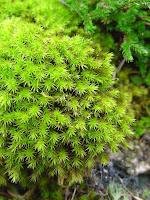Temperate Deciduous Forests
Hello, my name is Malcolm. This blog is a school project of which the objective is to research the biome that you live in. I live in a temperate deciduous forest located in Milwaukee, Wisconsin. This blog will contain facts and small bits of information concerning the temperate deciduous forest.
Thursday, November 8, 2012
Effects of Humans
Temperate deciduous forests are very important to humans. They are a major producer of food, oxygen and lumber. However, humans have many negative effects on these forests. An example is acid rain. Acid rain is rain infused with chemicals from industrial emissions and vehicle emissions. The rain damages the seed production of trees and the leaves of trees. Mass logging of these forests is also a major threat. Loggers cut down large areas of these forests at a time without letting others grow back. Humans have also been introducing invasive plant and animal species to temperate deciduous forests. These species override the native species, competing for food and limited resources, like shelter.
Animals
 |
| A white-tailed deer |
 |
| A bear |
Plant Life
 |
| A sweet gum tree |
 |
| Mosses |
Climate and Location
 |
| Fall in a temperate deciduous forest |
 |
| Winter in a temperate deciduous forest |
Subscribe to:
Comments (Atom)